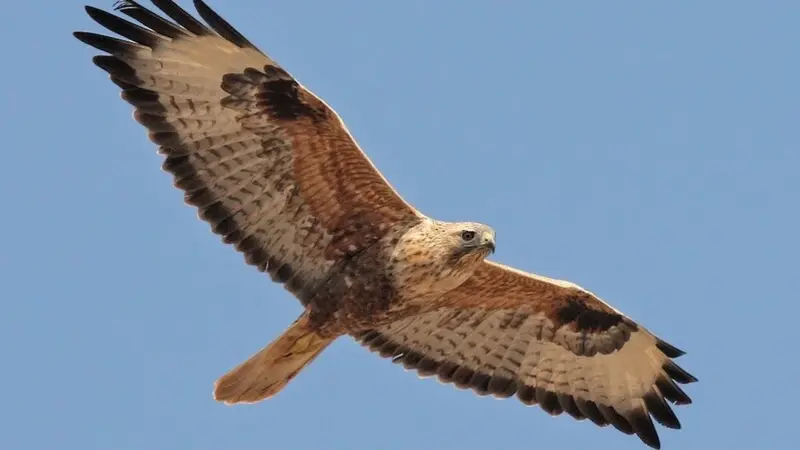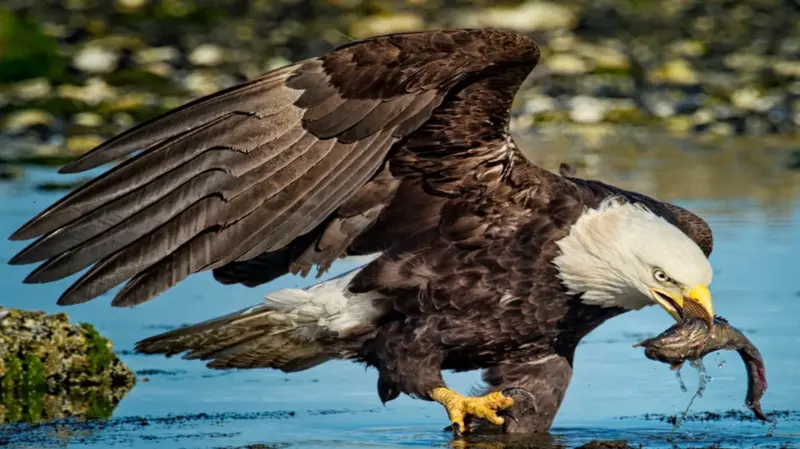The term “Hancock bird” refers to a vast, interconnected ecosystem that combines human intelligence and commitment with the splendor of birds, especially the bald eagle. This concept is explored through the efforts of the Hancock Wildlife Foundation (HWF), which focuses on varied wildlife conservation strategies to raise public awareness and enthusiasm.
The Hancock Bird blends myth and reality and holds significance in various cultures worldwide. This bird’s allure prompts a quest to understand its meaning, delving into its symbolic importance and the diverse interpretations it has inspired across different times and locations. This exploration is not merely about learning about a bird but about uncovering many meanings transcending geographical and temporal boundaries.
Historical and Cultural Background of the Hancock Bird
The Hancock Bird has deep roots in mythology and folklore, symbolizing wisdom and transformation across various cultures. This bird not only serves as a protective spirit but also represents change and renewal in different societies. Its presence in ceremonies and traditions has intertwined it with human history as much as it is part of nature.
Hancock Bird Meanings in Symbolic
The Hancock Bird is a prominent figure in literature and art, symbolizing freedom, resilience, and the transitory nature of life. It inspires poets and artists, serving as a motif to explore profound themes. The bird’s symbolism varies across cultures—it may represent guidance on spiritual journeys, signify love and fidelity, or herald good fortune. As times change, the Hancock Bird’s relevance adapts, mirroring modern-day concerns and aspirations.
Hancock Bird Meanings in Natural History
In natural history, the Hancock Bird occupies a unique niche. It adapts to diverse environments, from dense forests to open fields, and is resilient to various climates. With distinctive bright plumage and unique calls, the Hancock Bird not only survives in its habitat but also plays a crucial role in mating rituals and social interactions among birds. Its behaviors offer insights into the broader ecological dynamics and the critical role birds play in the natural world.
is Hancock a bird?
What is Hancock a bird? That is the most popular asked question. The term “Hancock Bird” may suggest it’s a species of bird, but it’s not a real bird identified in ornithology. Instead, it appears to be a symbolic or mythical figure steeped in folklore and cultural significance. The Hancock Bird is often mentioned in various mythological contexts, where it symbolizes wisdom, transformation, and renewal across different cultures. It serves as a powerful metaphor in literature and art, representing diverse themes and values. Therefore, while it is not an actual bird species, the Hancock Bird is significant in the symbolic and cultural realms. Here is the list of birds.
A Vanguard of Avian Conservation

Bald Eagle Conservation Efforts
The bald eagle symbolizes strength and freedom. David Hancock, a leader in wildlife conservation, focuses on these birds. His innovative methods highlight the importance of preserving habitats and conducting scientific research. These efforts ensure the survival and prosperity of bald eagles. The Hancock Wildlife Foundation (HWF) connects a global community of wildlife lovers and conservationists. They offer deep insights into bald eagles’ lives through detailed field studies and live eagle cameras.
Wildlife Habitat Stewardship
HWF aims to protect wildlife habitats. This effort extends beyond just saving specific species. Understanding the intricate relationships between animals and their environments, HWF engages in initiatives to conserve natural habitats. This broad approach not only benefits bald eagles but also enhances biodiversity, crucial for a healthy ecosystem.
Raptor Rehabilitation and Care
HWF runs rehabilitation programs for injured or orphaned raptors, providing them with a safe place and a second chance at life. These efforts support the foundation’s overall conservation goals and show its commitment to the welfare of these animals. By releasing healthy birds back into the wild and monitoring their progress, HWF helps strengthen raptor populations.
Live Eagle Cams
HWF’s live eagle cams have revolutionized how we interact with wildlife. These cameras offer a live look at the daily lives of eagles. This innovative tool fosters a sense of wonder and deepens our appreciation of nature. It bridges the gap between humans and wildlife and serves as a powerful educational resource.
Urban Wildlife Adaptation and Coexistence
As cities expand into natural areas, understanding how wildlife, particularly raptors, adapts is crucial. HWF’s research into urban wildlife adaptation provides valuable insights into the challenges and opportunities of human-animal coexistence. This knowledge is vital for developing strategies that support urban development while preserving biodiversity.
Engagement and Education: Building a Conservation Community
Avian Conservation Education
The Hancock Wildlife Foundation (HWF) places a strong emphasis on education as a cornerstone of wildlife conservation. They provide a variety of educational tools and opportunities to encourage conservation advocacy among people of all ages. Their initiatives range from public webinars to classroom resources designed to spark interest and promote active participation in conservation efforts.
Wildlife Online Streaming and Outreach
HWF utilizes online streaming technology to engage a global audience in their conservation projects. This approach not only educates viewers but also fosters a sense of community among those who share a passion for wildlife and conservation. It allows people worldwide to participate in conservation activities in real-time, enhancing their knowledge and commitment.
Eco-tourism and Bird Watching
HWF promotes bird watching and eco-tourism as interactive methods to appreciate and conserve nature. These activities demonstrate the interplay between recreation and conservation, raising awareness about the importance of preserving natural habitats for future generations.
David Hancock’s Enduring Impact and Vision for the Future
David Hancock’s Contributions
Its enduring influence on bird conservation highlights the success of HWF’s ongoing efforts. His expertise and dedication have pioneered new approaches in animal research and conservation, inspiring many to join the cause.
Conservation Technology Innovations
Looking ahead, HWF plans to explore new technologies and methods to enhance their conservation work. Innovations such as advanced live streaming capabilities and sophisticated tracking technologies are set to broaden our understanding of wildlife and improve conservation outcomes.
A Call to Action
The story of Hancock’s birds represents hope, connection, and discovery. It underscores the dynamic relationship between humans and nature and the power of collective action in biodiversity conservation. As HWF looks to the future, it stands as a beacon of conservation excellence, urging us to cherish and protect the birds that grace our skies.
Eagle Nesting Behaviors Unveiled
HWF focuses on studying eagle nesting behaviors to support conservation efforts. By monitoring these behaviors, they gain insights into the needs of bald eagles during their breeding cycles, which guides the management and conservation strategies for their habitats.
Insights from Live Eagle Cams
Live eagle cams provide a unique opportunity to observe eagles during nesting. These observations offer a detailed look at eagle parenting and chick development, delivering invaluable data for research and educational outreach. This direct window into eagle behavior enhances public awareness and supports conservation initiatives.
Impact of Environmental Changes on Eagle Nesting Behaviors
Environmental changes, including shifts in climate and habitat degradation, significantly influence Eagle nesting behaviors. The Hancock Wildlife Foundation (HWF) conducts ongoing research to understand these impacts better and inform conservation strategies to minimize negative effects and promote healthy eagle populations.
Habitat Conservation Strategies
Importance of Habitat Protection
HWF advocates for and implements habitat protection plans based on data about eagle nesting behaviors. Key components of these efforts include protecting nesting sites from human disturbances and ensuring the availability of adequate food sources.
Ensuring Sustainable Food Sources
The foundation places a strong emphasis on maintaining the natural food supply for eagles, which is crucial for their survival and reproductive success.
Migration Mysteries Explored
Insights into Migration Patterns
For decades, the mystery of eagle migration has captivated scientists and birdwatchers alike. HWF’s research into these patterns not only enhances our understanding of these majestic birds but also supports conservation measures to protect migratory routes.
Enhancing Conservation Efforts
The study of migration patterns is crucial for developing strategies that ensure the preservation of key migratory paths and rest stops used by eagles during their long journeys.
Tracking Technologies and Findings
Advancements in Tracking Methods
Technological developments in tracking, such as satellite telemetry and GPS, have revolutionized our ability to study eagle migration. These technologies allow HWF to gather detailed data on migration routes, timings, and the challenges eagles face.
Impact of New Technologies
The adoption of advanced tracking methods provides invaluable insights that help shape effective conservation practices.
Conservation Implications
Strategic Conservation Planning
The data collected from tracking eagle migrations are vital for crafting conservation plans that protect critical stopover sites and migratory corridors, ensuring safe passage for eagles during their annual journeys.
Long-term Species Viability
These conservation efforts are essential for the sustained health and viability of eagle populations across different regions.
HWF’s Role in Global Conservation Efforts
Expanding Global Impact
In addition to local wildlife issues, the Hancock Wildlife Foundation supports global conservation initiatives. Through partnerships and collaborative efforts, HWF extends its reach, advocating for the protection of bird species worldwide.
Legislative Influence
HWF plays a key role in pushing for stronger legislation to protect birds of prey. The foundation leverages its research and public support to influence policy and legislative changes that benefit eagles and other raptors globally.
International Collaboration and Public Engagement
Building Global Partnerships
HWF collaborates with research institutes and conservation organizations worldwide to share best practices, resources, and information. These partnerships enhance the effectiveness of conservation programs and present a united front against habitat destruction.
Educating the Public
Through educational initiatives and live streaming services, HWF engages a global audience, fostering community action towards bird and environmental conservation, and raising awareness about the importance of eagle preservation.
Emerging Challenges and Innovations
Addressing New Conservation Challenges
As the field of animal conservation evolves, HWF remains at the forefront, developing innovative solutions to emerging challenges, whether they stem from climate change, urban expansion, or new technologies.
Technological Advances in Conservation
HWF explores cutting-edge technologies, from drone surveys of eagle habitats to AI-powered analysis of eagle cam footage, to enhance its conservation efforts.
Adapting to Climate Change
Understanding Climate Impacts
Climate change poses a significant threat to wildlife, affecting migration patterns, food availability, and habitats. HWF’s research is crucial for understanding these impacts and devising adaptive management plans that ensure the resilience of eagle populations in a changing environment.
Frequently Asked Questions
What is the Hancock Wildlife Foundation?
The Hancock Wildlife Foundation is dedicated to the preservation of bald eagles and their environments. They use scientific studies, educational programs, and stewardship to support conservation efforts.
How do live eagle cams contribute to wildlife conservation?
Live eagle cams provide a real-time glimpse into the lives of eagles. They increase public interest and support for conservation and also supply important data for scientific studies.
What role does HWF play in raptor rehabilitation?
HWF assists in the recovery and rehabilitation of injured raptors. Their goal is to heal these birds and return them to the wild safely.
Why is urban wildlife adaptation important to HWF work?
HWF focuses on how raptors and other wildlife adapt to urban areas to create better conservation strategies. This helps promote peaceful coexistence in urban landscapes.
How does HWF engage public in conservation efforts?
HWF involves the public through live streams, educational initiatives, and volunteer opportunities. This helps build a community that values and supports wildlife conservation.
Conclusion
The Hancock Bird embodies a profound connection to the natural world, showcasing the intricate and mysterious nature of birds. Through the efforts of the Hancock Wildlife Foundation, we gain a deeper appreciation for the symbolism and significance of these majestic creatures. The foundation’s dedication to conservation, research, and education illuminates the vital roles that birds, particularly raptors like the bald eagle, play in our ecosystems. As we explore the meanings attributed to these birds, we are reminded of our responsibility to protect and preserve their habitats for future generations. The Hancock Bird not only represents the spirit of freedom and strength but also calls us to action toward greater environmental stewardship. Stay updated by regularly visiting Pulse Life Magazine for the latest news and information.
